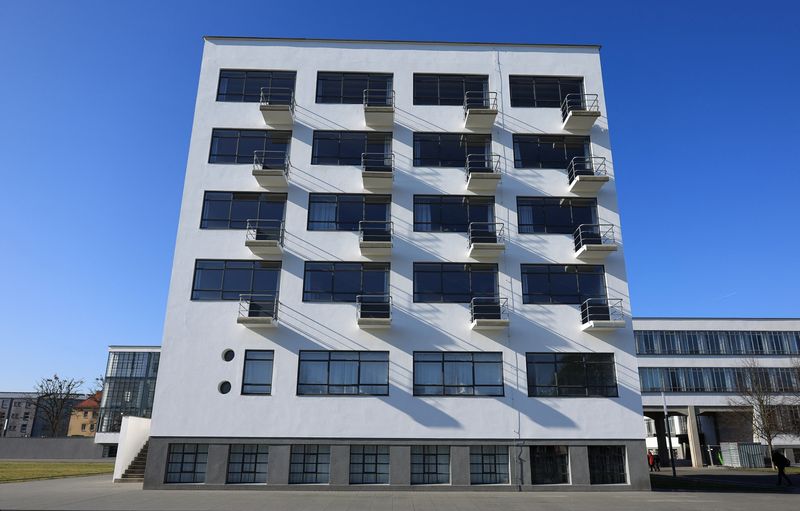By Thomas Escritt
BERLIN (Reuters) – It shaped modern industrial design and continues to inspire architects and product designers the world over, but to some on Germany’s far right, Bauhaus is nothing to celebrate.
As the East German city of Dessau prepares to celebrate next year’s centenary of the famed design school’s move there, the far-right Alternative for Germany (AfD) has urged local legislators not to glorify Bauhaus’ cosmopolitan style ethos, saying it negated regional traditions.
The AfD’s proposal, debated and roundly rejected by the state parliament of Saxony-Anhalt earlier this week, sparked a predictable outcry: Bauhaus was part of the interwar flourishing of German avant-garde culture that was stamped out by the Nazis when they came to power in 1933.
But for some, the content of the proposal was less significant than what it said about the party’s broader political strategy.
This year the AfD became the first far-right party to win a German regional election since World War Two, benefitting from a flagging economy but also by tapping into culturally divisive issues that crystallise splits over national identity.
“Culture war is their business model and provocation is their business model,” said Jan-Werner Mueller, a politics professor at Princeton University who studies populist far-right movements.
Elsewhere, the party has targeted authorities that use gender-neutral language and fly rainbow LGBTQ+ flags from municipal buildings, casting itself as a champion of traditional German grammar and family values.
Founded in 1919, the Bauhaus school set out to marry traditional craftsmanship with industrial production.
It became a magnet for designers from across Europe, many of them Jewish, and its very cosmopolitanism made it a cultural touchstone for post-war Germany as it looked for chinks of light in a history scarred by the genocidal crimes of the Nazis.
But that cosmopolitan spirit has been seized upon by some on the far right to portray the movement as un-German.
“The international spread of the Bauhaus style created a porridge-like homogeneity that displaced local architectural traditions,” the AfD’s legislative motion read, rejecting the “uncritical glorification” of the movement.
‘CREATING NOISE’
Around the world, the AfD is not alone among right-wing groups in rejecting modern architecture and design.
Donald Trump’s U.S. administration sought to prescribe neoclassical architecture for all new federal buildings, while Hungary’s nationalist Prime Minister Viktor Orban has rebuilt much of the centre of Budapest in a supposed restoration of its pre-war facade.
“The AfD has recognised the importance of the cultural sphere,” said Barbara Steiner, head of the Bauhaus Dessau Foundation. “Because you can use it to touch people’s hearts and emotions.”
The Bauhaus building in Dessau, with its distinctive steel window frames, unadorned facade and curved lettering is an international icon that inspired much post-war social housing, not all of which was successful or popular.
That has given the AfD space to argue that it is defending German culture by attacking the school and its legacy – including the clean, airy lines of Ludwig Mies van der Rohe’s architecture or Marcel Breuer’s iconic cantilever chair.
“They’re creating noise, showing that they are protecting their voters, defending high art and traditional values,” said Stephan Ehrig, a lecturer at Glasgow University.
The fact that the attack dismayed admirers of the Bauhaus style made it all the more effective as a tactic: polarisation is good politics, he added.
During this week’s debate in Saxony-Anhalt, the AfD legislator behind the proposal, Hans-Thomas Tillschneider, told the legislature “your worship of Bauhaus seems very fragile … if our subjecting it to a little criticism might take your precious Bauhaus away from you.”
(Reporting by Thomas Escritt; Editing by Helen Popper)
